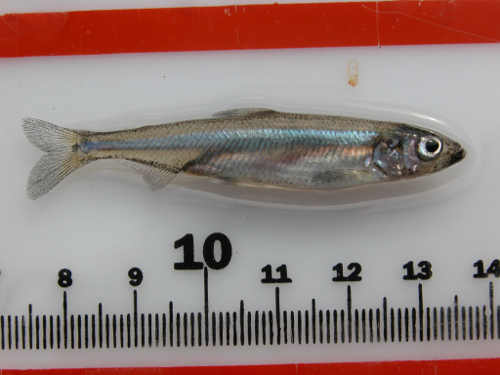
There is some good news about one of the state’s endangered fish populations.
The California Department of Fish and Game reported that Delta smelt abundance in 2011 is greater than it has been since 2001 but remains a small fraction of historical abundance.
State biologists believe the improvement in the Delta smelt’s population is likely due in large part to higher than usual Delta outflow, which resulted in more and better habitat.
Because it is exceptionally difficult to determine the actual number of Delta smelt, Department of Fish and Game biologists use survey data to develop “indices” of the species’ abundance.
An index is a number that is likely to vary in direct proportion to abundance, the state said. For example, if a hypothetical index were to double from 4 to 8 then abundance would also have doubled (e.g., from 200,000 to 400,000).
The Fall Midwater Trawl Survey index of Delta smelt abundance – which has been developed almost yearly since 1967 and is named after the season and type of net used to collect fish for the index – was 343 this year while the index in 2010 was 29 and its record high was 1673 in 1970, the Department of Fish and Game reported.
After a decade of record or near-record low annual abundance, the increased number of Delta smelt in 2011 is encouraging, biologists said.
To help protect and recover Delta smelt, the Department of Fish and Game monitors the geographic distribution and trends in the abundance of Delta smelt during each of its life stages.
In January, the agency will begin monitoring the spawning migration of adult Delta smelt and resulting larval Delta smelt.
Delta smelt occur only in the Sacramento-San Joaquin River Delta, into which waters from Clear Lake and Cache Creek flow.
The finger-sized fish was historically one of the most abundant in the Delta, but the species declined substantially and was listed as threatened under the California and Federal Endangered Species acts in 1993.
After a further decline, the species was designated as endangered in 2010 under the California Endangered Species Act.
Ongoing efforts to protect and recover the Delta smelt population include research on threats to the species, active management to minimize loss at water diversions under federal Endangered Species Act biological opinions and a state Endangered Species Act authorization, development of the Bay Delta Conservation Plan, improved water quality, habitat restoration and conservation of genetic diversity through special hatchery-rearing techniques.
Longfin smelt abundance is also indexed using Fall Midwater Trawl Survey data, the state said. Abundance of the species in 2011 is greater than it has been since 2006 but remains a small fraction of historical abundance.
The species declined substantially and was listed as threatened under the California Endangered Species Act in 2010.
Follow Lake County News on Twitter at http://twitter.com/LakeCoNews, on Tumblr at www.lakeconews.tumblr.com, on Google+, on Facebook at www.facebook.com/pages/Lake-County-News/143156775604?ref=mf and on YouTube at www.youtube.com/user/LakeCoNews .